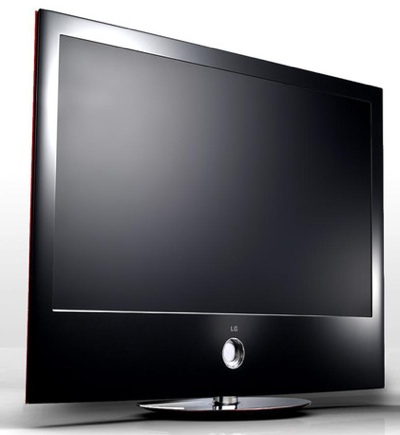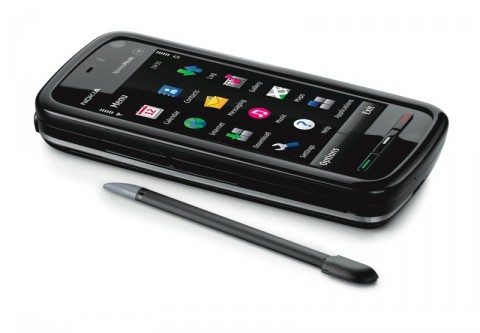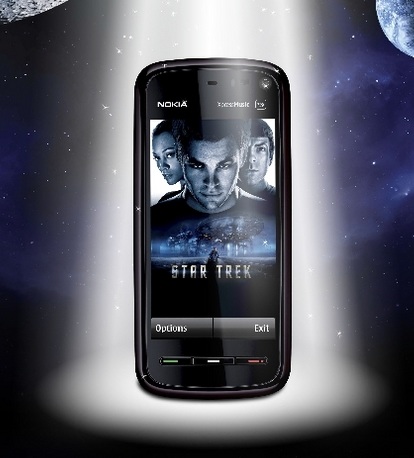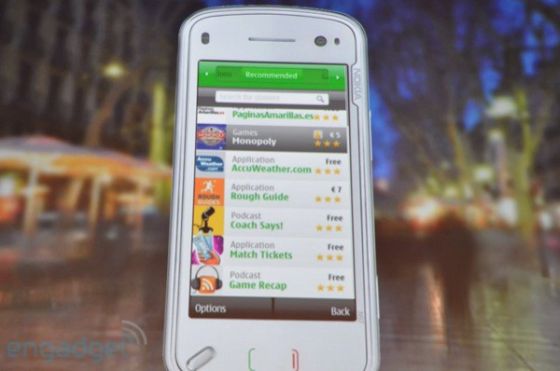
Nokia 2760 AND Nokia 2760 Technical Specifications
The Nokia 2760 is a Clamshell form of Mobile Phone created by Nokia.
Technical Specifications
Size: 87mm x 45mm x 21mm (when closed)
Operating Frequency: Dualband GSM 900/1800 or 850/1900 (supports EDGE)
Main Screen: 128x160 pixels, 65 thousand colors
External Screen: 96x68 pixels, monochrome
Camera: VGA (640x480) stills, 128x96 8fps video
Memory: 11 megabytes built-in storage space
Connections: Bluetooth, 2.5mm audio jack, handsfree connector
Platform: Series 40 5th Edition LE
Software Compatibility: Java ME
Other Notable Features: Secondary screen displays useful information
Hearing Aid Compatibility: M3/T3
Nokia E63
Released late in 2008, the Nokia E63 is marketed as a budget business phone. It is based on Nokia's S60 platform. Although it looks very similar to E71, its body is made of plastic and not steel as in E71. Also its keypad is made from a different material and is laid out slightly different from that of the E71. Many of the specifications are identical to the E71 except for the lack of GPS and Infrared, removal of the second camera for video conferencing, lack of HSDPA and lower quality camera with a fixed focus lens.

Nokia 6000 series AND Nokia 6150 AND Nokia 6151 AND Nokia 6151 Design and appearance AND Nokia 6170 AND Nokia 6216 classic Nokia 6230 and Nokia 6230i
Nokia 6000 series
Nokia 6151
Design and appearance
The design of the 6151, primarily based on its previous version the Nokia 6080, has conserved a classical appearance. Buttons and connectors are kept flush in order to maintain the phone's smooth appearance. The phone features a unique design which allows the phone an easy handling of the phone with only one hand. It is available in black, grey, lime green, orange and white.
Nokia 6170
The Nokia 6170 is one of the clamshell phone series from Nokia with a compact form and an integrated VGA camera (640x480 pixels).
Nokia 6216 classic
Nokia 6230 and Nokia 6230i

The Nokia 6230 is a mobile phone based on the Nokia Series 40 platform. It features a 16-bit TFT color screen with a resolution of 128×128 pixels, a VGA camera that can record video clips in H.263 (SubQCIF) format at 128×96 pixels, built-in Bluetooth wireless technology, FM radio (when a wired headset is attached to the Pop-Port interface to act as an antenna), and playback of MP3 and AAC audio. It is also EGPRS (EDGE) capable of speeds up to 220 kbit/s. In addition, it has changeable Xpress-on covers available for purchase.
It uses an Extended Li-Ion Battery of 850 mAh. The 6230 accepts MMC memory cards up to 1 GB in capacity (supported by later firmware releases) on which multimedia files and data can be stored. SD cards are not supported. It operates on either GSM 900/1800/1900 MHz (Nokia 6230 RH-12), or GSM 850/1800/1900 MHz (Nokia 6230b RH-28) for the North American market.

Cingular Wireless was the primary GSM carrier that offered the Nokia 6230b in the
Nokia 6230 was nicknamed Matrix during development. The updated version 6230i was nicknamed Matrix 2.
In 2005 Nokia released an updated version, the 6230i model (RM-72) which includes a 1.3 megapixel camera, 208×208 screen resolution (65,536 colours), a slightly larger display, and a raised selection button in the midst of the scroll key. It is also standard UMS (USB mass storage device class) compliant, i.e. no proprietary drivers are required to transfer data to and from the device's memory card. It weighs 99 g (including battery BL-5C) and the dimensions are 103 mm x 44 mm x 20 mm, 76 cc.
Nokia 3200 AND Nokia 3205
ABOUT NOKIA
Type Public – Oyj
(OMX: NOK1V, NYSE: NOK, FWB: NOA3)
Founded
incorporated in Nokia (1871)
Founder(s) Fredrik
Idestam
Headquarters
Area served Worldwide
Key people Jorma Ollila (Chairman)
Olli-Pekka Kallasvuo (President & CEO)
Richard A. Simonson (CFO)
Mary T. McDowell (CDO)
Industry Telecommunications
Internet
Computer software
Products Mobile phones
Smartphones
Mobile computers
Networks
(See products listing)
Services Services and Software
Online services
Revenue €50.722 bn (2008)
Operating income €4.966 bn (2008)
Net income €3.988 bn (2008)
Total assets €39.582 bn (2008)
Total equity €16.510 bn (2008)
Employees 120,827 in 120 countries (June 30, 2009)
Divisions Devices
Services
Markets
Subsidiaries Nokia Siemens Networks
Navteq
Symbian
Vertu
Qt Software
Website Nokia.com
Nokia
Nokia Corporation (Finnish pronunciation: [ˈnɔkiɑ]) (OMX: NOK1V, NYSE: NOK, FWB: NOA3) is a Finnish multinational communications corporation that is headquartered in Keilaniemi, Espoo, a city neighbouring Finland's capital Helsinki.Nokia is engaged in the manufacturing of mobile devices and in converging Internet and communications industries, with 128,445 employees in 120 countries, sales in more than 150 countries and global annual revenue of EUR 50.7 billion and operating profit of 5.0 billion as of 2008. It is the world's largest manufacturer of mobile telephones: its global device market share was about 38% in Q2 2009, down from 40% in Q2 2008 and up from 37% in Q1 2009. Nokia produces mobile devices for every major market segment and protocol, including GSM, CDMA, and W-CDMA (UMTS). Nokia offers Internet services that enable people to experience music, maps, media, messaging and games. Nokia's subsidiary Nokia Siemens Networks produces telecommunications network equipment, solutions and services. The company is also engaged in providing digital map information through its wholly-owned subsidiary Navteq.
Nokia has sites for research and development, manufacture and sales in many countries throughout the world. As of December 2008, Nokia had R&D presence in 16 countries and employed 39,350 people in research and development, representing approximately 31% of the group's total workforce.The Nokia Research Center, founded in 1986, is Nokia's industrial research unit consisting of about 500 researchers, engineers and scientists.It has sites in seven countries: Finland, China, India, Kenya, Switzerland, the United Kingdom and the United States.Besides its research centers, in 2001 Nokia founded (and owns) INdT – Nokia Institute of Technology, a R&D institute located in Brazil. Nokia operates a total of 15 manufacturing facilities located at Espoo, Oulu and Salo, Finland; Manaus, Brazil; Beijing, Dongguan and Suzhou, China; Farnborough, England; Komárom, Hungary; Chennai, India; Reynosa, Mexico; Jucu, Romania and Masan, South Korea.Nokia's Design Department remains in Salo, Finland.
Nokia is a public limited liability company listed on the Helsinki, Frankfurt, and New York stock exchanges.Nokia plays a very large role in the economy of Finland; it is by far the largest Finnish company, accounting for about a third of the market capitalization of the Helsinki Stock Exchange (OMX Helsinki) as of 2007, a unique situation for an industrialized country. It is an important employer in Finland and several small companies have grown into large ones as its partners and subcontractors. Nokia increased Finland's GDP by more than 1.5% in 1999 alone. In 2004 Nokia's share of the Finnish GDP was 3.5% and accounted for almost a quarter of
Finns have consistently ranked Nokia as both the best Finnish brand and the best employer. The Nokia brand, valued at $34.9 billion, is listed as the fifth most valuable global brand in the Interbrand/BusinessWeek Best Global Brands list of 2009 (first non-US company).It is the number one brand in Asia (as of 2007) and Europe (as of 2008), the 42nd most admirable company worldwide in Fortune's World's Most Admired Companies list of 2009 (third in Network Communications, seventh non-US company), and the world's 85th largest company as measured by revenue in Fortune Global 500 list of 2009, up from 88th the previous year. As of 2009, AMR Research ranks Nokia's global supply chain number six in the world.
Nokia 3110 Features AND Specification

Nokia 6555 AND Nokia 6555 Features AND Nokia 6555 Specification
The Nokia 6555 is a brand of mobile phone launched in the third quarter of 2007.

Secondary display in 128 x 160 pixel with 262k colors
Video recorder with audio support (records up to 60 seconds in 176 x 144 resolution)
Streaming video and audio
Wireless connectivity with Bluetooth
30 MB internal memory
Java MIDP 2.0 applications
Data synchronization with PC via PC Suite
Quad-band operation in GSM 850/900/1800/1900 networks
Additional features:
Nokia Operating System 40 5th edition
Micro-USB 2.0
HSCSD data transfer up to 43.2 kbit/s
Carrier AT&T
Screen active-matrix 240 x 320 pixel (QVGA) 2,0”, 16M Colors
Exterior screen 128 x 160 pixel, 262k colors
Camera 1.3 Megapixel
Operating system Nokia OS
Memory 30 MB internal memory
Networks GSM, GPRS, HSCSD, EDGE
Connectivity Bluetooth
Physical size 99.6 mm x 44.3mm x 19.6 mm
Weight 97g
Hearing aid compatibility M3/T3
Nokia 5210 AND Nokia 5210 Bugs
The Nokia 5210 is Nokia phone which features rubber Xpress-On shells, WAP over CSD and a built in thermometer (the thermometer is actually the internal temperature of the phone's battery, this feature is also present on other phones that have "netmonitor" enabled). The 5210 is nicknamed "The Builder's Phone" or "The Diver" because of its rubber splash/impact proof casing.
Like most of Nokia's phones users can change the casings easily from the original colours: blue or orange mixed with silver and black. The screens LED colour is orange.
The phone has a built in infra red interface which allows it to talk to a PC equipped with an infra red USB device. Nokia supply free software to allow the phone book to be edited and text messages to be typed, sent and read from the PC - a lot easier than using the phone key pad.
Nokia E66 Features
The Nokia E66 is a slider smartphone in the Nokia Eseries range, a S60 platform third edition device with slide action targeting business users. It is a successor to the Nokia E65 of which it shares many features.
E66 has similar features to the Nokia E71 handset, but lacks the larger capacity battery and full QWERTY, however the E66 is smaller in size and weighs less. The E66 also includes an accelerometer and new animations and transition effects, which are lacking in the E71.

Dual band UMTS / HSDPA: UMTS 900 / 2100
FM Radio 87.5-108 MHz with Visual Radio
3.2 megapixel camera (2048 x 1536 pixels) with Self-portrait mirror, autofocus and LED flash
110 MB Internal user storage, support up to 8GB MicroSDHC memory card
Video: 320 x 240 (QVGA) at 30/15 fps, 176 x 144 at 15 fps (QCIF)
Front facing camera for video call
2.36 inch QVGA (320x240) landscape screen
Modes: Define user preset standby screens for different times of the day
Accelerometer and Light sensor
OS: S60 3rd Edition, Feature Pack 1 (Version 3.1), with Symbian OS Version 9.2
In-Box Colours: grey steel, white steel, black steel and red steel
Operating times
Standby time: Up to 14 days (3G), 11 days (GSM)
Discussion
Bundled Software
Adv. Call Manager
Barcode Reader
Chat and instant messaging
Dictionary
Download!
Email for Nokia
File Manager
Flash Lite 3.0
Global Race - Raging Thunder
Internet Radio
Java MIDP 2.0
MfE (Mail for Exchange)
Multiscanner
Nokia Maps (with 3 months of Turn by turn navigation mode trial)
Nokia Search
Nokia browser
PDF Viewer
Quickoffice (Quickword, Quickpoint, Quicksheet)
Sports Tracker
WiPresenter
Wireless Keyboard
World Mate
ZIP Manager
Nokia 6101 Full Phone Specification
Nokia 6300i AND Nokia 6300i Features AND Nokia 6300i Specification sheet
The Nokia 6300i is a mobile telephone handset produced by Nokia. It is an upgraded version of Nokia 6300 and has the same design as the 6300, but adds WLAN/VoIP capability.The device is designed for typical use in

Modes GSM 900 / GSM 1800 / GSM 1900
Regional Availability
Weight 93 g
Dimensions 106.8 x 43.8 x 11.7 mm
Form Factor Candybar
Display Type: LCD (Color TFT/TFD) Colors: 16.7 million (24-bit) Size: 2" Resolution: 240 x 320 pixels (QVGA)
Platform / OS BB5 / Nokia Series 40, 5th Edition, Feature Pack 1
Memory 30 MB (Max User Storage)
Phone Book Capacity 2000
Digital TTY/TDD Yes
Multiple Languages Yes
Polyphonic Ringtones Chords: 64
Ringer Profiles Yes
Vibrate Yes
Bluetooth Supported Profiles: A2DP, AVRCP, DUN, FTP, GAP, GAVDP, GOEP, HFP, HSP, OPP, SAP, SDAP, SPP
PC Sync Yes
USB Built-in Mini-USB connector
Multiple Numbers per Name Yes
Voice Dialing Yes
Custom Graphics Yes
Custom Ringtones Yes
Data-Capable Yes
Flight Mode Yes
Packet Data Technology: EDGE (EGPRS)
WLAN support 802.11b/g
WAP / Web Browser WAP 2.0 / supports HTML, XHTML, TCP/IP
Predictive Text Entry Technology: T9
Side Keys volume keys on right
Memory Card Slot Card Type: microSD / TransFlash up to 4 GB. 512 card included (depending on service provider)
Email Client Protocols Supported: IMAP4, POP3, SMTP supports attachments
MMS MMS 1.2 / SMIL
Text Messaging 2-Way: Yes
FM Radio Stereo: Yes
Music Player Supported Formats: AAC, AAC+, AMR-NB, AMR-WB, MIDI Tones (poly 64), MP3, MP4, Mobile XMF, SP-MIDI, True tones, WMA, eAAC+
Camera Resolution: 2+ megapixel with 8x digital zoom
Streaming Video Protocol: 3GPP
Video Capture QCIF resolution / 15 fps
Alarm Yes
Calculator Yes
Calendar Yes
SyncML Yes
To-Do List Yes
Voice Memo Yes
Games Yes
Java (J2ME) Version: MIDP 2.1, CLDC 1.1 supported JSRs: 120, 135, 172, 177, 184, 185, 205, 211, 226, 234, 248, 75, 82
Headset Jack (2.5 mm) Yes
Speaker Phone Yes
Latest Firmware Version 5.60 (Previous 05.20)
Nokia 6303 classic AND Nokia 6303 classic Features AND Nokia 6303 classic Specification sheet
The Nokia 6303 Classic is a mobile telephone handset produced by Nokia. The Nokia 6300 has been in production since the second quarter of 2009.
Features
Like most other recent Nokia phones, the 6303c eschews their old Pop-Port connector for a standard micro-USB connector.
The phone allows the user to view the video clips in full-screen landscape mode and set the fast-forward/rewind interval from a few seconds to minutes. Improved audio quality for music playback was also noted for this firmware version, thus making the Nokia 6303c a music phone similar to its counterparts, the Nokia XpressMusic. In addition, video clips can replace ringtones so that an actual motion picture is shown while there is an incoming call.
Specification sheet
Modes GSM 850 / GSM 1800 / GSM 1900
Weight 96 g (3.37 oz)
Dimensions 106.4 x 43.6 x 11.7 mm (4.2 x 1.72 x 0.46 in)
Form Factor Candybar
Display Type: LCD (Color TFT/TFD), Colors: 16.7 million (24-bit), Size: 2.2", Resolution: 240 x 320 pixels (QVGA)
Platform / OS BB5 / Nokia Series 40, 6th Edition
Memory 18 MB (built-in, flash shared memory)
Phone Book Capacity 3000
FCC ID PPIRM-222, PPIRM-217 for Asia/Europe version
SAR 0.57 W/kg
Digital TTY/TDD Yes
Multiple Languages Yes
Polyphonic Ringtones Chords: 64
Ringer Profiles Yes
Vibrate Yes
Bluetooth Supported Profiles: HSP, HFP, A2DP, SAP version 2.1 + EDR
USB Built-in Micro-USB connector (does not charge phone)
Multiple Numbers per Name Yes
Voice Dialing Yes
Custom Graphics Yes
Custom Ringtones Yes
Data-Capable Yes
Flight Mode Yes
Packet Data Technology: EDGE (EGPRS) class 12
WAP / Web Browser WAP 3.0 / supports HTML, XHTML, TCP/IP
Predictive Text Entry Technology: T9
Side Keys volume keys on right; power/profile selection key on top
Memory Card Slot Card Type: microSD / TransFlash up to 4 GB. 1 GB card included (depending on service provider)
Email Client Protocols Supported: IMAP4, POP3, SMTP supports attachments
MMS MMS 2.0 / up to 600 KB per message / SMIL
Text Messaging 2-Way: Yes
FM Radio with RDS function Stereo: Yes
Music Player Supported Formats: MP3, MP4, AAC, AAC+, eAAC+, WMA, WAV
Camera Resolution: 3.2 megapixel with 8x digital zoom
Streaming Video Protocol: 3GPP,H.263,H.264
Video Capture VGA resolution / 15 fps / H.263 format
Alarm Yes
Calculator Yes
Calendar Yes
SyncML Yes
To-Do List Yes
Voice Memo Yes
Games Yes
Java (J2ME) Version: MIDP 2.0, CLDC 1.1 supported JSRs: 75, 82, 120, 135, 172, 177, 184, 185, 205, 226
Headset Jack (3.5 mm) Yes
Push-To-Talk Yes
Speaker Phone Yes
Official Latest Firmware Version 09.74/09.93 (depending on product code)






















